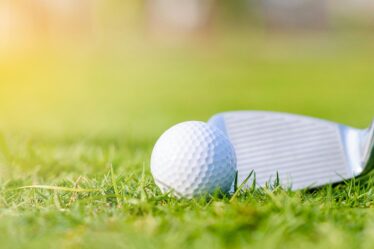
When it comes to enhancing your performance on the golf course, the condition of your equipment plays a pivotal role, and at the heart of that equipment are your golf clubs. As a golfer, understanding when to replace your clubs is essential for maintaining optimal performance and ensuring a consistent playing experience. Over time, even the highest quality clubs can suffer from wear and tear, affecting their accuracy, distance, and overall effectiveness. Factors such as frequency of play, swing dynamics, and the materials used in club construction all contribute to the lifespan of your golf clubs. Additionally, advancements in technology and design can render older models less effective, prompting golfers to consider upgrades for improved performance. In this article, we will explore the key indicators that signal it might be time to replace your clubs, examine the typical lifespan of various types of clubs, and offer guidance on how to assess the state of your equipment. Whether you’re a casual weekend player or a seasoned pro, understanding the optimal replacement timeline for your golf clubs can significantly impact your game, allowing you to perform at your best and enjoy the sport to its fullest.
– Factors Influencing Golf Club Lifespan
The lifespan of golf clubs is primarily influenced by the materials used in their construction, as well as the frequency and manner in which they are used. Clubs made from high-quality metals and advanced composites tend to resist wear and deterioration better than those composed of lower-quality materials. Furthermore, the way clubs are maintained—such as regular cleaning and proper storage—plays a crucial role in prolonging their life. Clubs subjected to harsh conditions, such as excessive moisture or high-impact environments, may degrade faster, emphasizing the importance of optimal care practices.
Player skill level and swing mechanics also significantly impact the wear on golf clubs. Beginner golfers may not generate as much force, leading to slower wear, while advanced players with a more aggressive swing may experience faster degradation, particularly of the clubface and shafts. Additionally, the type of courses played—whether they feature hard or soft ground conditions—can influence the rate of wear and tear on clubs. Ultimately, understanding these factors can aid golfers in making informed decisions regarding maintenance and replacement cycles for their equipment.
Consider usage frequency and playing conditions to determine when to replace your clubs.
Evaluating the frequency of use and the playing conditions encountered on the course is essential in determining when to replace golf clubs. Regularly used clubs, especially those employed in various weather conditions or on courses with diverse terrains, may exhibit signs of wear and tear more rapidly. For instance, clubs frequently used in wet or sandy conditions can suffer from rust or erosion, while those exposed to hard surfaces may have a compromised structural integrity. Golfers should monitor their equipment for any noticeable changes in performance, such as loss of distance, accuracy, or an unusual sound during impact, which can indicate that replacement is necessary.
Additionally, taking into account the player’s typical practice regimen is vital. Clubs that are used consistently during practice sessions, as well as in competitive play, may require more frequent evaluation than those used sporadically. Establishing a routine to assess the condition of the clubs based on personal usage patterns and the environmental factors they encounter will help ensure optimal performance and enhance the overall playing experience. By being proactive and attentive to these elements, golfers can make informed decisions about when it is time to invest in new equipment.
– Signs Your Clubs Need Replacement
Visible signs of damage such as dents, scratches, or a worn grip can significantly affect a player’s ability to execute shots effectively. Moreover, if players notice that their clubs frequently miss their intended targets or that they struggle to achieve consistent ball flight, it may be time to consider an upgrade.
Another critical factor is age. Golf technology advances rapidly, and older equipment may not only feel outdated but may also lack the performance enhancements found in newer models. If a golfer finds that their clubs are consistently underperforming compared to peers using newer technology, it might be an indicator that theirs have become obsolete. Ultimately, paying attention to both physical wear and technological advancements will ensure a more enjoyable and successful golfing experience.
Look for wear, damage, or decreased performance as indicators it’s time for new clubs.
Assessing the condition of golf clubs is essential for maintaining optimal performance on the course. Signs of wear, such as frayed grips, rusted clubheads, or bent shafts, can directly impact a golfer’s ability to make accurate shots. When the integrity of the equipment is compromised, whether through physical damage or diminished effectiveness, it can lead to inconsistencies in play that are often frustrating for golf enthusiasts. Monitoring these indicators regularly allows players to make informed decisions about when to invest in new clubs, ensuring that they can perform at their best.
Furthermore, decreased performance, even with well-maintained clubs, can be a signal that it’s time for an upgrade. As golfers become more skilled or as their swing mechanics change, older clubs may no longer suit their evolving game. If players find that they are unable to achieve the desired distance or trajectory consistently, or if they experience increasing frustration during rounds, it might be a clear indication that new equipment is necessary. By remaining vigilant about both physical and functional aspects of their clubs, golfers can enhance their overall experience and enjoyment of the sport.
– Recommendations for Club Replacement Frequency
While individual play styles and preferences vary, a general guideline suggests replacing golf clubs every 3 to 5 years. This timeframe allows players to take advantage of advancements in technology and design that can enhance performance, such as improved materials and club construction techniques. For those who play regularly or are competitive, more frequent evaluations may be warranted, as the wear and tear on clubs can accelerate. Additionally, if a golfer has undergone significant changes in their swing or physical conditioning, it may be prudent to reassess their equipment sooner than the standard recommendation.
In cases where clubs show visible signs of damage or degradation, immediate replacement is advisable, regardless of the typical replacement schedule. Elements such as grip condition, shaft integrity, and overall club performance should be key factors in determining the right time for an upgrade. By staying attuned to both the physical condition of the clubs and personal golfing progression, players can ensure their equipment remains a strong ally in their pursuit of improvement on the course.
Experts suggest replacing clubs every 3-5 years or as needed based on performance.
Regular assessment of golf equipment is crucial for maintaining optimal performance on the course. With advancements in technology and materials, clubs that were once cutting-edge can quickly become outdated. Golfers should consider not only the age of their clubs but also how well they are performing. If shots are consistently off-target or if the feel of the club has diminished, it may be time to explore newer options that can better align with the golfer’s evolving skills and preferences.
Furthermore, individual playing habits and frequency of use can significantly influence the longevity of golf clubs. For those who practice extensively or participate in frequent rounds, wear and tear can occur more rapidly, warranting a closer look at their equipment. Ultimately, golfers should remain proactive in evaluating their clubs, ensuring that their gear remains an asset rather than a hindrance to their game.
In conclusion, the frequency with which you should replace your golf clubs ultimately depends on several factors, including your playing style, skill level, and the wear and tear your clubs experience over time. While a general guideline suggests replacing your clubs every 3 to 5 years, it’s essential to assess their performance regularly and consider advancements in technology that could enhance your game. Additionally, if you notice a decline in your performance or significant damage to your equipment, it may be time to invest in new clubs sooner. By staying attuned to your needs and the condition of your gear, you can ensure that you’re equipped with the right tools to elevate your golfing experience.



